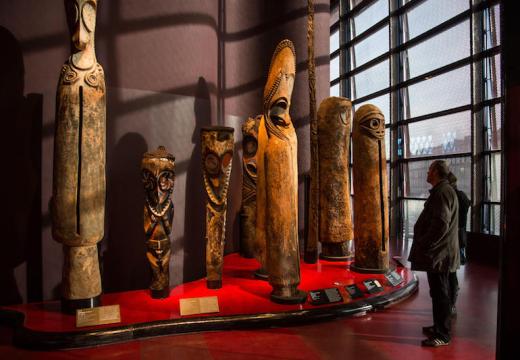Successive UK governments have recognised the need for special forms of tax relief if important collections of heritage chattels and other property of heritage interest are not to suffer fragmentation from tax-driven sales, especially following a death, to the disadvantage of the community as a whole. So far as chattels are concerned, such reliefs are also perceived as a part of the defence against the outflow from the United Kingdom of important works of art. What is less well publicised, perhaps, is that comparable tax incentives apply to companies seeking to help protect national heritage.
If a company owns objects that are of national importance, or that are associated with buildings in public ownership or even land and buildings of the requisite standard, and decides to sell them, since 2009 the tax system has provided a financial incentive to sell them to a UK public museum or other organisation or body that holds heritage property for public enjoyment. The eligible purchasing bodies are those listed in Schedule 3 of the Inheritance Tax Act 1984: broadly, all national museums, museums under local authority or university control, the National Trust, the National Trust for Scotland, the Art Fund, NHMF, the friends of the National Libraries, any university and, since 2016, those museums and galleries that had been maintained by a local authority or university but are now constituted as independent charitable trusts (such as Pallant House Gallery). Museums and galleries that are not Schedule 3 bodies can still benefit from the tax concessions, as HMRC has confirmed that it is acceptable for a Schedule 3 body to ‘front’ the purchase on behalf of a non-Schedule 3 acquiring institution, dependent upon the latter’s suitability and on its preserving the property for public benefit. This would most often be the local authority or the Art Fund (which fronted the acquisition of Dumfries House in 2007).
Such sales are exempt from corporation tax on companies’ gains, and the vendor company receives a percentage of that exemption back as an inducement. This is usually 25 per cent for chattels and 10 per cent for land and buildings, but the rate is negotiable. The arrangement offers an inducement to corporate owners of historic buildings, outstanding land and pre-eminent chattels (or those with historical associations) – to companies with their own art collections and those owning heritage properties such as historic house hotels, for instance – to pursue the possibility of a private treaty sale. It is also of particular interest to the National Trusts and the Historic Buildings and Monuments Commission for England when purchasing land, buildings and chattels from companies.
A second incentive is available in the context of export-deferred objects. These can be bought by Schedule 3 bodies in a tax-efficient way. When an object is under export deferral, there is no longer the need for an inducement to encourage owners to sell to the nation: those owners will have invariably already agreed the sale before applying for an export licence, so Schedule 3 bodies can buy such objects at the net of tax price. Here companies can assist with the funding: they can give cash and shares to museums and receive tax relief whereby the donations are set against their profits (i.e. pre-tax income) for corporation-tax purposes.
Thirdly, there are the provisions of the Cultural Gifts Scheme, which came into operation in spring 2013. The scheme enables UK taxpayers (individuals and companies) to donate important works of art and other heritage objects (including collections and groups) that will be held for the benefit of the public or the nation. In return, donors receive a tax reduction based on a set percentage of the value of the item they donate, which for companies is 20 per cent. This can be set against their corporation tax in the accounting year in which the gift is registered. So far, two gifts by a company have been reported, both from Daniel Katz Ltd: a gilt-bronze writing casket to the Ashmolean and an album of drawings of compositions for a volume of Hesiod’s Works and Days and Theogony designed by John Flaxman (to the British Museum).
Other little-used reliefs are payroll giving (or Give As You Earn), which provides the same benefits as Gift Aid but is effected through one’s employer, rather like tax under Pay As You Earn (PAYE). The donation, straight from the employee’s wages or pension, is taken before tax, which means the charity gets more and it costs the employee less (so to donate £1 a lower-rate taxpayer pays 80p, a higher-rate one 60p, and an additional-rate one 55p). It also means that charities do not have to claim Gift Aid, so there is less red tape for them; by shouldering the administrative burden, the employee’s company fulfils part of its corporate responsibility.
In addition to money, equipment or trading stock (items it makes or sells), limited companies can also give land, property or shares in another company to a charity or sell them to a charity for less than they are worth. Even if the company sells the land, property or shares on the charity’s behalf it can still claim tax relief on the donation. Such donations are free of tax on capital gains and the value of the gift (the market value) can be deducted from the company’s pre-tax profits.
Where a company provides an employee to work or volunteer for a charity on secondment or a temporary basis, the company can continue to deduct the costs of the employment, including the employee’s salary, for tax purposes. This applies to sole traders, trading partnerships, and companies with a trading or investment business. The company must continue to pay the employee and run PAYE on their salary. But it can set the costs (including wages and business expenses) against its taxable profits as if the employee were still working for it. Auction houses or art dealers could second an employee to a museum (to work on an exhibition or a project, for example), which might be a new way for regional museums to collaborate with the art market and exchange knowledge and information.
According to the Directory of Social Change, ‘company giving only makes up a relatively small percentage of voluntary sector income – about 4.8% compared with, for example, about 35% from the general public […] Recent trends in business marketing practices, however, mean that companies, especially the larger ones, have become more proactive in their support. There has been a shift towards Cause Related Marketing (CRM), where companies seek out major national charities with a high-level “brand” profile to support and be associated with.’ It is a good time, then, to come up with imaginative ways for companies to contribute to protecting the UK’s cultural heritage and passing it on to future generations.
It has long been understood that the government needs to use fiscal measures in order to preserve essential elements of our national heritage. As Lord Winstanley stated in 1980, during the reading of the National Heritage Bill: ‘We live in a world nowadays in which it is not possible always to get people to do things in the national interest by telling them to do them, by legislating that they should do them or merely by persuasion. We are not in a world now in which many people can automatically afford to make grand gestures by bestowing land and their own personal property on the nation for preservation. We must, I think, make a proper use of fiscal measures.’ Such measures are available, but not being used to their fullest.
Anastasia Tennant is Senior Policy Adviser, Collections and Cultural Property, Arts Council England.
This article first appeared in the April issue of Apollo.
Unlimited access from just $16 every 3 months
Subscribe to get unlimited and exclusive access to the top art stories, interviews and exhibition reviews.














![Masterpiece [Re]discovery 2022. Photo: Ben Fisher Photography, courtesy of Masterpiece London](http://www.apollo-magazine.com/wp-content/uploads/2022/07/MPL2022_4263.jpg)
It’s time for the government of London to return to its rightful home